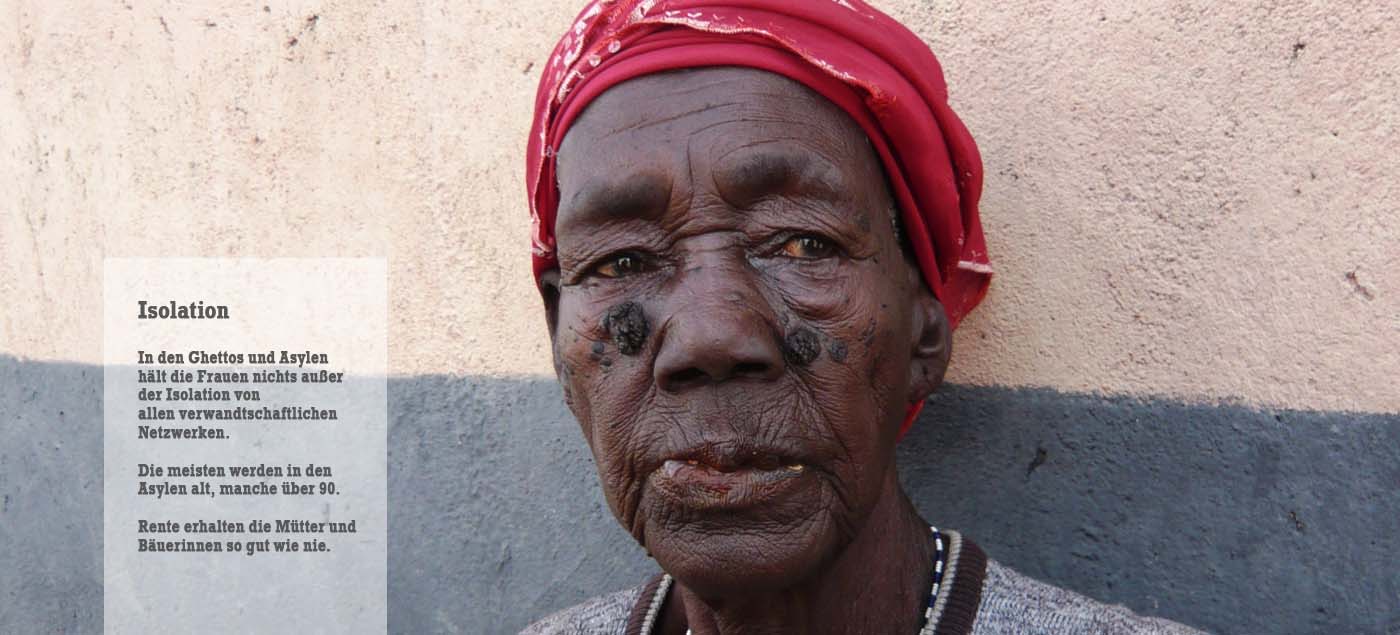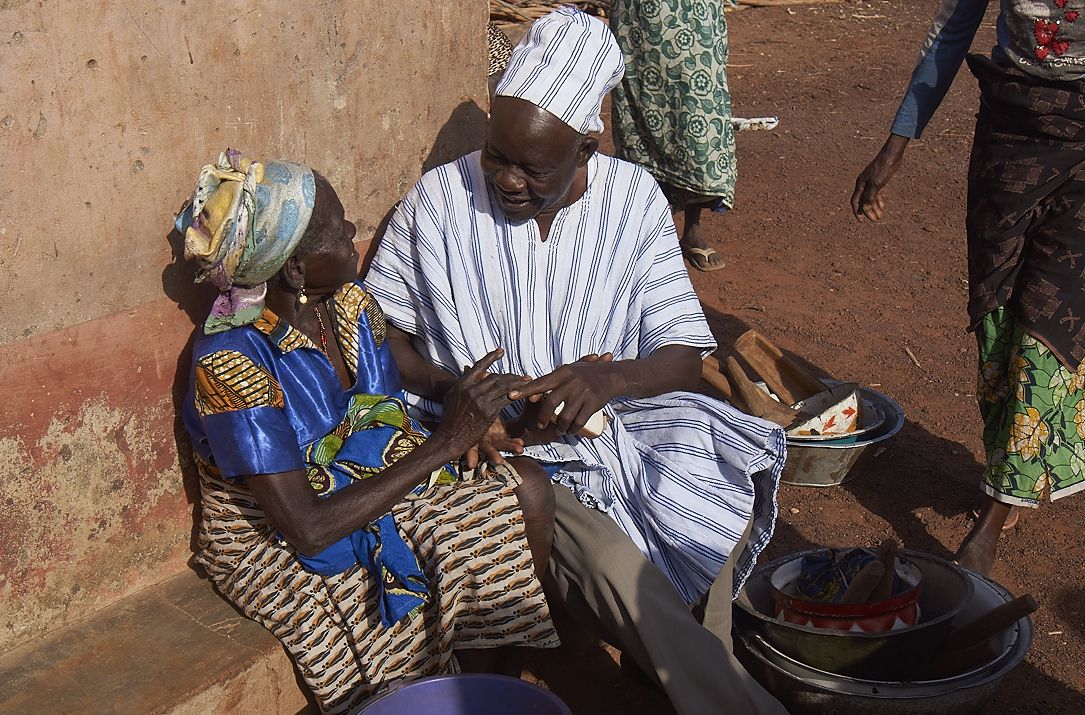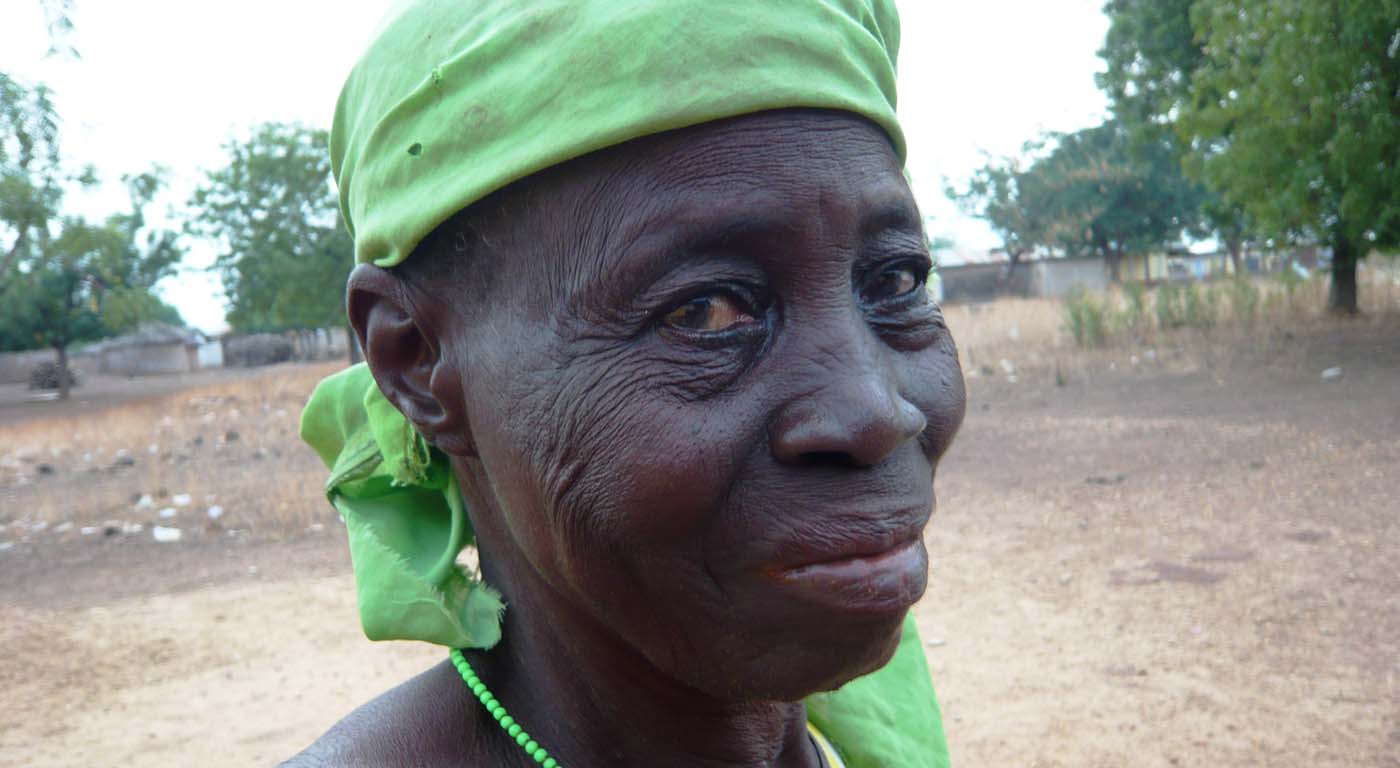Witch-hunts are a current problem. During the last two decades tens of thousands had been murdered mostly in sub-Saharan Africa. This might already outnumber the devastative european witch-hunts during Rennaissance (1500-1600). In many areas it is elderly women, but also men or children are accused of bringing death, draughts, crop-failure, unemployment, accidents or diseases by spiritual means. People fear witchcraft and sorcery mainly from close relatives and neighbours – people they know and maybe even love. In general the belief in god and demons, spirits and witches is very, very strong throughout Ghana. This includes all religions, christians, muslims, traditionalists. One unsolved question is therefore: Why is it that almost everyone beliefs in spiritual powers but just some people decide to accuse others and even kill them?
In Northern Ghana eight settlements for witch-hunt victims exist. The two largest camps at Kukuo and Gnaani/Tindang shelter around 2000 refugees of both sexes, the other six shelter another 500 women. In Kukuo are women, who were accused as their hair turned grey. In Gushiegu, most of the women are Konkomba as are in Nabuli. In Kpatinga, Dagomba and Konkomba mix while in Gambaga most tribes from all over Northern Region are present. Many of the Konkomba were accused with a dream named as “proof”. In this “witch dream” a person sees itself attacked by the person later on accused as a witch. Many people regard this as proof or at least as a grounded suspicion. “No one can see what is in other peoples belly.” Therefore no one can know if a person is NOT a witch. Once the accusation is there, only exile can be the result. No one puts hopes into police or judges, who won’t interfere with “family matters”. Some also fear their children to be killed by poison or sorcery, if they don’t give in to the accusation and leave home.
More than one third of the outcasts in Gushiegu suffered physical violence. Most had been attacked with whips made from fan-belts or thorns, cutlasses, sticks, knifes. One woman was tortured with a needle driven slowly into her finger. Others were scared away or left for good after an accusation.




